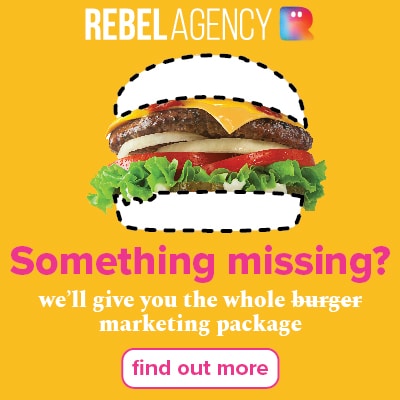Owning your own business in your grandparents or even your parent’s time was a little different from owning a business now, but the basics are still the same. Back then running a business was almost as easy as putting out the welcome mat and turning over the open for business sign on the door. Yes, Mum or Dad still put in the hard yards and long hours and most of the networking was done over a few beers at the pub.
Today, we still do the hard yards, and long hours, our networking is still over a few beers or chardies, but there’s a whole lot more competition and technology have changed the way we talk to our customers and get our customers.
As much as things stay the same, many things have changed.
Let’s start with your shopfront. Years ago, you had a retail space, customers walked through the front door and fingers crossed they bought from you. Now whether you’re in retail, trades or services industry, you still have a shopfront. In fact, you have more than one, even if you are a home-based business.
Now not only is your physical address your shopfront, but your website is also, your business Facebook site is, your Instagram even your Linkedin
account is now your shopfront.
They are all places to sell you, your products or your services. Each one of your shopfronts needs to work hard, otherwise, they are wasting your time. How many hours a day do you put in in front of a computer, on social media or dabbling in email marketing? Too much and for what return?
Many business people spend big dollars on a website that just looks pretty. If you are going to spend your hard-earned dollars on a website its got to work for you, otherwise you have just paid good money for a glorified business card.
If you don’t catch the attention of your customers quickly, you’ll lose them, so from the moment your potential customers hit your website, its sell sells sell.
So lets me use the traditional shopfront to explain how your website should work for you.
If someone walks past your shop, something has to catch their eye to draw them in. In your physical shop, it’s your window display. What is doing that on your website?
What is it on your website that grabs their attention and invites them in.
Back to the physical shop – the customer comes in, and they are drawn to a display just inside the door and then to another further in again. In a dress shop, you may have a display of accessories at a special price point and then further in a large sign that has ‘further reductions’ on it or ‘last chance sale items’. These are hooks that are drawing your customers further into your store.
This is when your customer service person takes over. ‘Customer Service person’ – another fancy way to say, salesperson. Now if your salesperson is good, they’ll offer a compliment, strike up a conversation and subtly find out what the customers’ favourite colour is. Then they’ll start making suggestions. Faster than you can winkle your nose, the customer is in the change room and your salesperson is handing over lots of suggestions or items for them to try on.
If they are good, on the way out they will upsell, not with one accessory but at least two accessory choices. Remember the rule, you can say no to one, but given a choice, which one do you like? A or B, you are going to make a decision and choose.
As you walk them to the sale point, have last-minute, smaller priced items in front of them or tell them about a special offer that you have this week.
This is basic stuff. It’s selling 101 in a retail store, but it’s amazing how many times we ignore the basic practices in business.
So how do we transpose this to our website?
- What is that window dressing that draws the customers in?
- What is that first display offer?
- What is the next offer?
- We see they have put something in their cart, now let’s upsell
- (people who have bought this item, also have bought.. and suggest)
- Upsell again. Spend over $200 and get a gift with purchase/free shipping/gift card
- Then make it easy for them to buy.
That’s fine if you have an e-commerce site, but what happens if you don’t? How can you get your customers to take the next step and contact you?
Follow the same principles.
- What is your first offer?
- What is your second offer
- How easy is it to contact you?
Fill in your name, email or telephone number and press send. We’ll do the rest. Don’t make it too difficult. If you make your customers jump through too many hoops – they’ll give up.
Example:
Why does someone go to a plumbers website? They have a plumbing problem.
So your first offer is: What problem can we help you with? Click your problem for our fact sheets (these are lead magnets – you’ll use to get contact information from your prospect”;
- Leaking taps
- Clogged toilet
- Blocked drains
- Dishwasher install
- Water bill too high
They’ll click the issue relevant to them and presto.. they’ll get a page relevant to their problem.
Of course, no one wants to unclog their own toilet or clean out an S bend, so here’s our number, If your problem is urgent, we’re available 24/7 or fill in the contact form and we’ll call you back during office hours.
If your website is not working for you it’s no better than a business card. And if that’s what you are using it for – make sure your contact details are front and centre.
Our team at Rebel Agency can work with you to build your new website, get your offer right and make it sure.
Cheryl Jowitt is co-founder of Rebel Connect PL, a family owned and operated Australian business that provides total marketing solutions. Rebel Connect clients have access to advertising across the company’s radio networks, Rebel FM & the Breeze and Rebel Agency, a digital marketing solutions company providing website development, SEM and social media marketing strategies.




